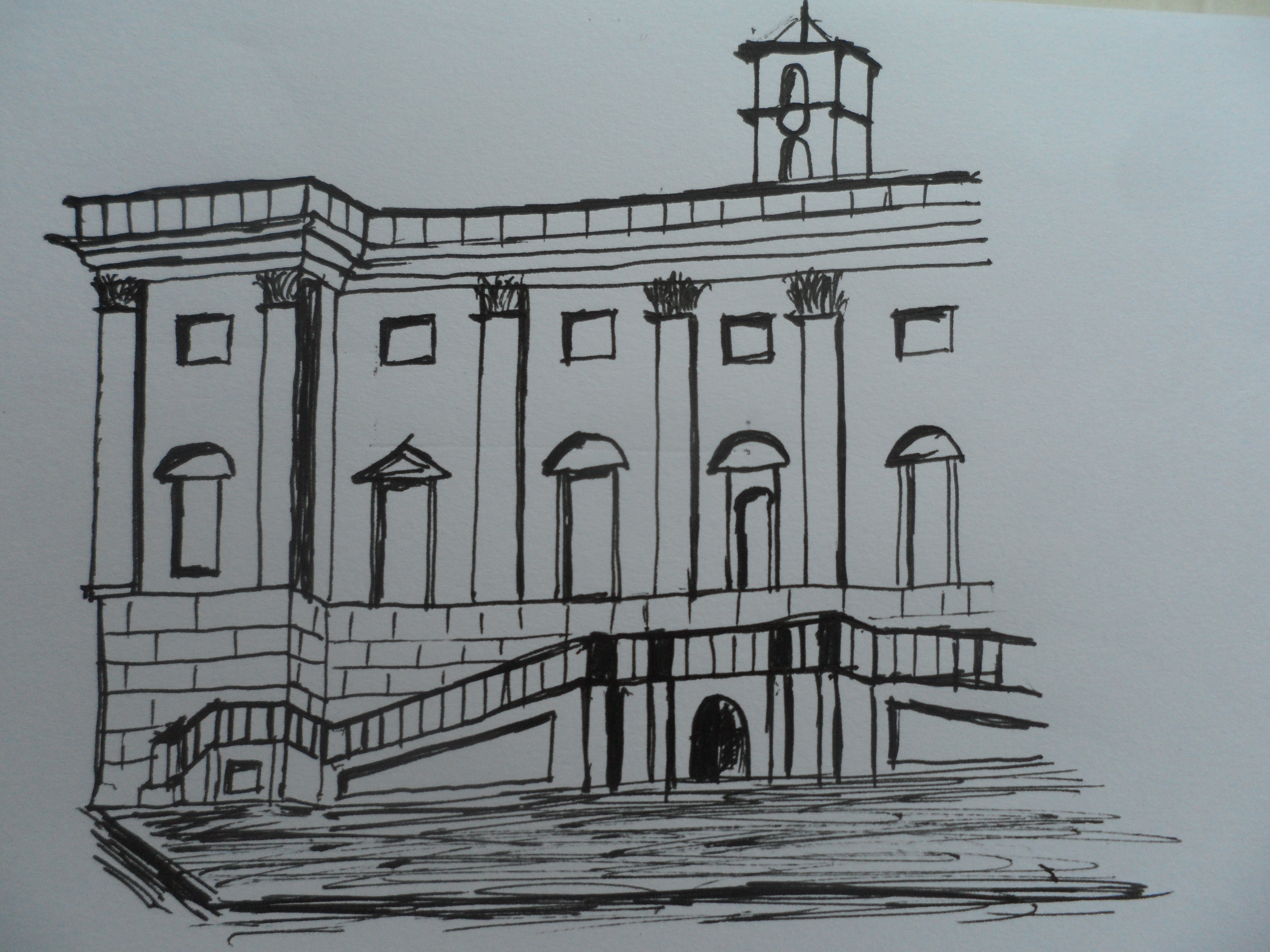
Neoclassical Architecture Drawing Easy The New Art
Key features of Neoclassical architecture include the use of columns, pediments, and symmetrical layouts. Buildings often feature grand entrances with porticos supported by columns, creating a sense of monumentality and classical elegance. Symmetry, balance, and clean lines are prevalent, reflecting a pursuit of harmony and clarity in design.

Pin by Shones100 on Backgrounds for manga (temples and palaces) Architecture drawing
Neoclassical architecture began in 1800s as a reaction to Rococo and Baroque architectural styles. Rococo and Baroque architecture focused on elaborate ornaments, detail and decoration. Neoclassical architecture response was to go back to simple, massive, classical form of the Greek and Roman architecture era.

IMG_5909 Architecture drawing, Neoclassical architecture, Architecture sketch
Neoclassical architecture, sometimes referred to as Classical Revival architecture, is an architectural style produced by the Neoclassical movement that began in the mid-18th century in Italy and France. It became one of the most prominent architectural styles in the Western world. [1]

Pin by Hamond Teefardud on dessin Architecture drawing, Architecture, Neoclassical architecture
Explore images Neoclassicism in architecture A revival style that looks back to the Classical past and the architecture of ancient Greece and Rome, but unlike the re-interpretation of classical forms seen in the Renaissance, this was a much more academic approach.

(29) Twitter Architecture sketch, Neoclassical architecture, Amazing architecture
Neoclassical architecture is characterized by grandeur of scale, simplicity of geometric forms, Greek—especially Doric ( see order )—or Roman detail, dramatic use of columns, and a preference for blank walls. The new taste for antique simplicity represented a general reaction to the excesses of the Rococo style.

Neoclassical Painting Easy Sketch Creative Art
A modern interpretation of ancient lines, Neoclassical architecture is the 18th-century reboot of classical architecture. It tried to bring the grandeur and scale of ancient architecture into modern buildings, and it's safe to say that it was pretty successful.

Late 19th c. Drawing of Neoclassical Building by Architect D. D. Cassidy Jr. Holzman Antiques
Early Neoclassical Architecture (1640-1750) The earliest forms of neoclassical architecture grew up alongside the Baroque, and functioned as a sort of corrective to the latter's flamboyance. This is particularly evident in England, where examples of early neoclassicism include buildings like St Paul's Cathedral, the Royal Observatory in.

Italian School Neoclassical art, 18th century paintings, Architecture drawing
CHIJMES is a historic building complex in Singapore's Central Business District_(Photo credit: Matthew6) The reverence for ancient styles and ideals aided the revival of Neoclassical architecture.Architects drew inspiration from the symmetry, proportion, and grandeur of classical forms in Greek and Roman antiquity.

Neoclassical Sketch at Explore collection of Neoclassical Sketch
Neoclassical buildings generally involve grandeur, massive scale, and the use of drama, but steer away from artifice and decoration. Instead, they are designed to evoke a sense of simplicity and conform to rules of symmetry.

Details Neoclassico
Neoclassical buildings typically feature columns, simple geometric forms, a grand scale, and ornamental details—particularly the Doric order—that were popular in ancient Greece and Rome. The.
Awesome 12 Images Features Of Neoclassical Architecture Home Plans & Blueprints
The Neoclassical style is used more generally to describe any piece of art or architecture, from the 18th Century onwards, which takes inspiration from Classical culture: whether that means using motifs and ideas from Classical art, or outright copying it. Indeed, the Neoclassicists of the 18th Century - artists, sculptors, writers, patrons.

GCA Blog Architecture drawing, Architecture concept drawings, Neoclassical architecture
Neoclassical architecture refers to a style of buildings constructed during the revival of Classical Greek and Roman architecture that began around 1750 and flourished in the 18th and 19th centuries.

Pin on Architectural decorative blocks
Neoclassical architecture is known for its high columns, majestic scale, and simplicity of design compared to the other prominent styles of its era. Harkening back to the buildings of Ancient Greece and Rome, it crested in popularity in both the United States and Europe from the middle of the eighteenth century to the early nineteenth century.

Eric Inman Daum AIA, Architect Neoclassical architecture, Neoclassical house, Neoclassical
What is Neoclassical Architecture? The builders and architects of ancient Greece developed sets of rules, known as the Three Orders, to govern the proportion and design of buildings. Buildings constructed in the neoclassical style follow these orders: Doric, Ionic, and Corinthian. The most obvious way to differentiate between these orders is by.

Draw the feature of the neoclassical architecture. Brainly.ph
Drawing for an Oratory (Memorial Chapel), depicting a section of a round building. A central, domed hall is surrounded by corridors. Porticos are at left and at right. From the latter, a staircase leads down to subterranean rooms. A big sepulchral monument stands in the center. Other monuments are in the main hall and the corridors.

Neoclassical architecture, Neoclassical architecture sketch, Diagram architecture
What is Neoclassical Style Architecture? Designed with the perfectly proportioned buildings in mind, Neoclassical architecture includes simple geometric forms, symmetry, and balance, which presented a dramatic contrast to the Baroque's and Rococo's style's elaborate ornamentation, asymmetry, curves, moldings, and serpentine lines.
